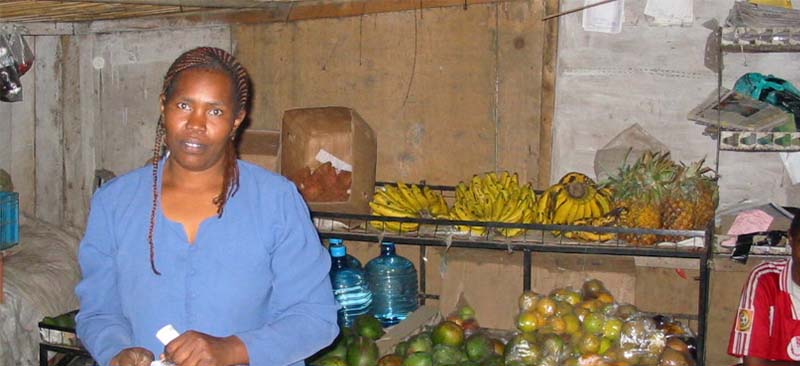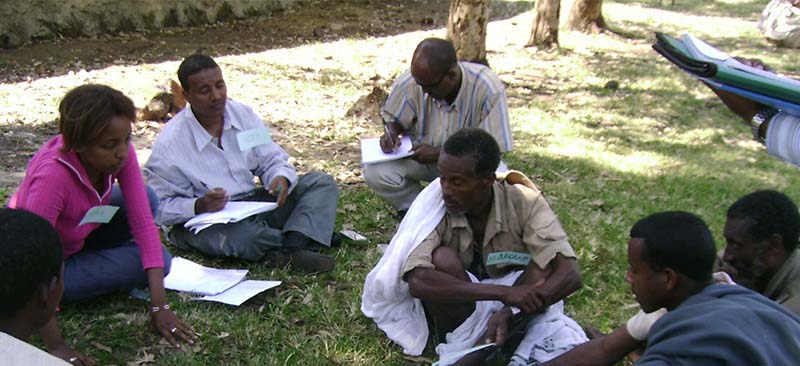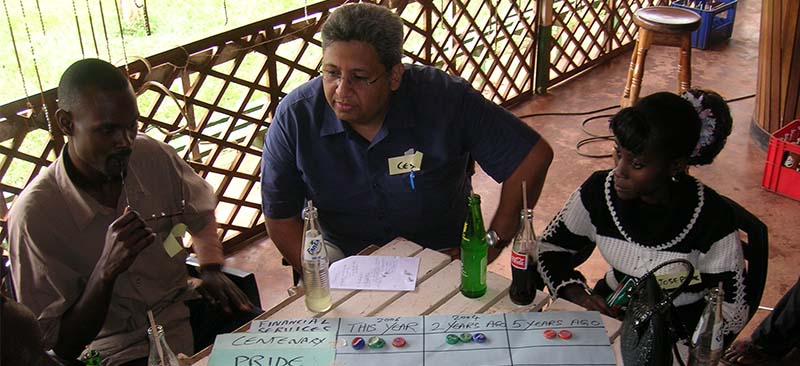The research was conducted throughout Kampala in a range of settings. This research paper examines which groups among the poor Uganda Women’s Finance Trust (UWFT) reaches. It aims at understanding the nature of risks confronting the poor clients of the UWFT and how financial services improve client’s capacity to manage and control assets and build up their asset base to protect against and cope with risks. The research paper analyses how microfinance services enable clients to use assets to maintain a minimum economic threshold.
Blog
Savings and Needs in East Africa: An Infinite Variety
This paper focuses on risk management strategies of the poor people to cope with the crisis situation as it temporarily or permanently disrupts the income stream of the household to meet their basic needs. There are a variety of risk management strategies employed by the poor in the East African countries of Tanzania, Uganda, and Kenya. These include investments in human, physical, financial and social assets. The objective of this report is to assess the financial needs of poor communities in East Africa, and to evaluate existing programs in order to determine potential savings products that not only address those needs but address those needs in a manner best suited to the capabilities and desires of the targeted communities. It details out a framework suggested by Rahman and Hossain for analysing risk that considers the extent to which a specific disruption can be anticipated, and hence planned for, as well as the degree to which these disruptions affect the choice of responses. The risks have been classified as life cycle risks related to events such as marriage, birth, education, healthcare, widowhood, old age, death etc, structural risks such as changes in national or international economy and crisis risks that are sudden and unexpected. It also explains in detail the responses of various informal, semi-formal and formal institutions to these needs through designing client focused products and service delivery innovations to counter these risks.
A Critical Review of Savings Services in Africa and Elsewhere
This paper reviews what motivates poor people to save and how MFIs might assist, while still retaining the MFIs’ focus on profitable operations and on sustainability. It briefly reviews the variety of systems and mechanisms that poor people use to save, and discusses the issues that the poor face. These issues are reviewed in the context of the trade-offs between access, liquidity/duration, risk/security, and returns on deposits made. There is also a brief review of traditional economists’ perspectives on savings and the demand for money. It also looks at the issues of compulsory, “locked-in” savings and the role they play in securing loans and capitalising MFIs. This paper analyses how different savings products are designed to meet the variety of reasons, why people save and the issues which MFIs face as they design savings products and services. It examines the marketing tools used by MFIs to promote their savings products and the challenges faced by MFIs as they design savings products and services. It also reviews the continuum of products from the highly liquid current account to what is possibly the most illiquid form of saving, life insurance and discusses the implications of the varying levels of liquidity for MFIs seeking to manage funds. The paper also attempts to bring together the key lessons and overlaps and offers conclusions and recommendations for MFIs seeking to design poor-responsive savings services.
Reviving Postal Savings Banks In East Africa
The poor have always been precluded from savings services in the formal financial sector. This paper highlights the importance of savings services in the lives of poor people and correlates the experience of different countries in ensuring and encouraging safe savings services to the poor through postal savings banks (PSBs). It recommends PSBs to improve their operational efficiency through technology, conduct market analysis and research for assessing clients’ demands, set up good internal audit teams, and adopt professional banking practices so as to provide efficient services to the clients. In concludes with suggesting the PSBs to also move into lending operations.
Market Research for MicroFinance – Letting Demand Drive Product Development
This report is the result of research largely based on the “Market Research for MicroFinance” tools. It examines the high (25- 60%) drop-outs amongst MFIs throughout East Africa. The paper assess the impact of microfinance services on poverty and vulnerability provides recommendations on both systems and product design changes that might improve organisation’s efficiency and clients’ satisfaction with the financial services it offers explores the tools for studies in microfinance and the specific cases they can be used to investigate argues that one of the most powerful aspects of the tools is that they can be changed, combined and adapted to examine specific interest areas The author concludes that the eventual impact of microfinance on poverty and the sustainability of MFIs will ultimately depend on organisations’ systems and products. Thus in the increasingly competitive environment in which MFIs operate, the challenge for the future, is how to improve the quality of financial services available to clients.The more appropriate and the higher the quality of financial services on offer, the better business will be both for MFIs and for their clients.
Dropouts Amongst Kenyan Microfinance Institutions
Examines why the MFIs in Kenya suffer such remarkably high levels of drop-out amongst their clients. The field study also seeks to improve understanding of why the current systems and services being provided by the MFIs appear (on the basis of these drop-out rates) to be failing to meet the needs and demands of the clients, and draws lessons for MFIs that wish to effect change.





